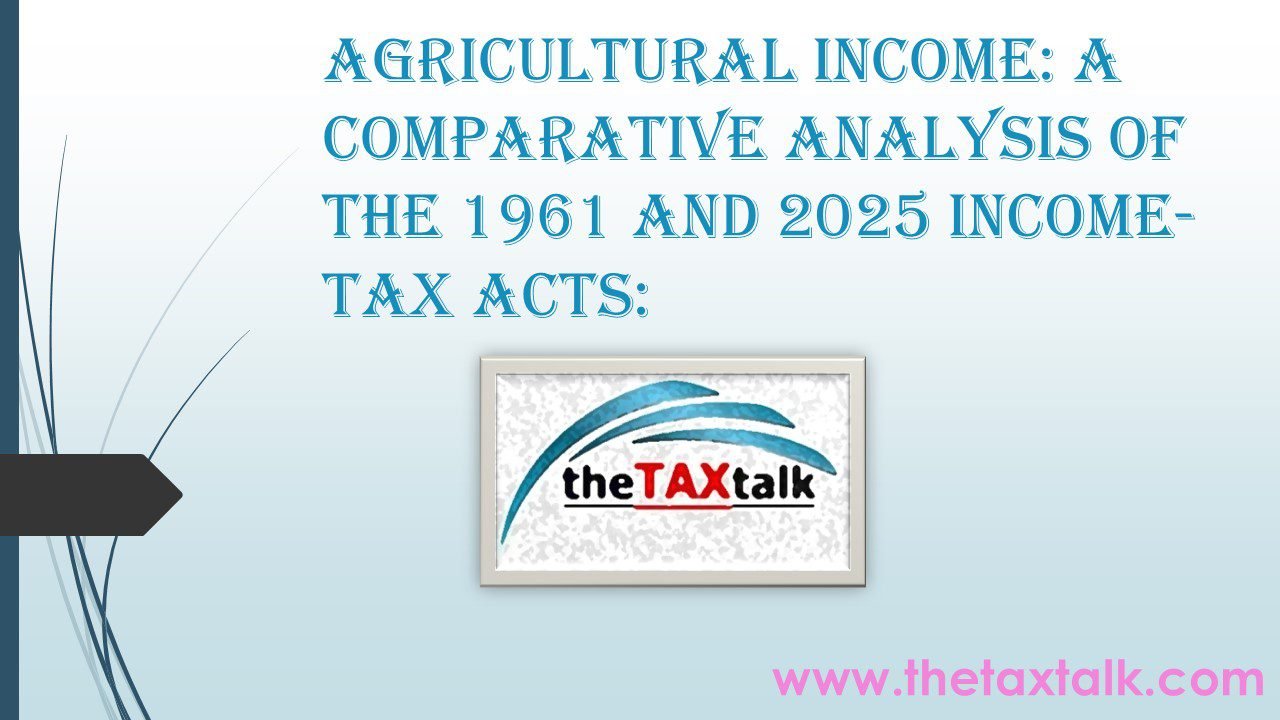![]()
Agricultural Income: A Comparative Analysis of the 1961 and 2025 Income-tax Acts:
Agricultural Income: A Comparative Analysis of the 1961 and 2025 Income-tax Acts:
Both the Income-tax Act, 1961 (old law) and the Income-tax Act, 2025 (new law, effective 1 April 2026) define agricultural income in Section 2(1A) (1961 Act) and Section 2(5) (2025 Act) respectively.
1961 Act (Sec. 2(1A)) Agricultural income means – Rent or revenue from land used for agricultural purposes in India.
Income from land by – agriculture; process employed by cultivator/receiver of rent-in-kind to make produce fit for market;
sale of such produce without further process.
Income from buildings used for agricultural operations (residence, storehouse, etc.), subject to land revenue/local rate conditions.
Explanation: Income from growing saplings/seedlings in a nursery deemed agricultural income
Exclusions: Income from buildings/land used for non-agricultural purposes. Income from transfer of certain urban land.
2025 Act (Sec. 2(5)) Agricultural income means – Rent or revenue from land used for agricultural purposes in India.
Income from land by – agriculture; process ordinarily employed by cultivator/receiver of rent-in-kind to make produce marketable;
sale of such produce without further process.
Income from buildings used for agricultural purposes (dwelling house/store-house/out-building near the land, subject to revenue conditions).
Any income derived from saplings or seedlings grown in a nursery (carried over from the 1961 amendment, but now fully embedded in the principal definition).
Bottomline: No material change- The new Income Tax Act, 2025, does not introduce any material changes to how agricultural income is defined and treated for central income tax purposes. It maintains the exemption for agricultural income derived from land in India and continues the system of partial integration to determine the tax rate on a person’s non-agricultural income.
Simplification– The key revisions in the 2025 act focus on simplifying the overall law and updating procedures rather than altering the fundamental tax treatment of agricultural income.
Exclusions remain the same – e.g., letting buildings for non-agricultural purposes, transfer of urban agricultural land.


